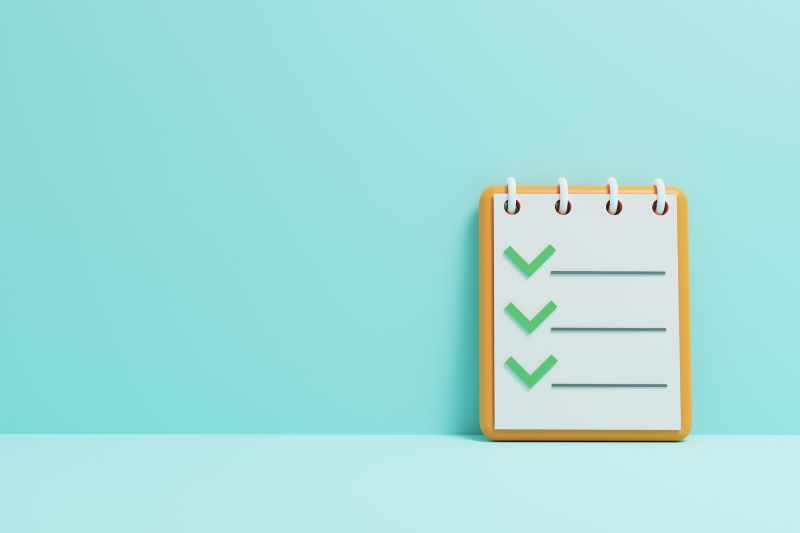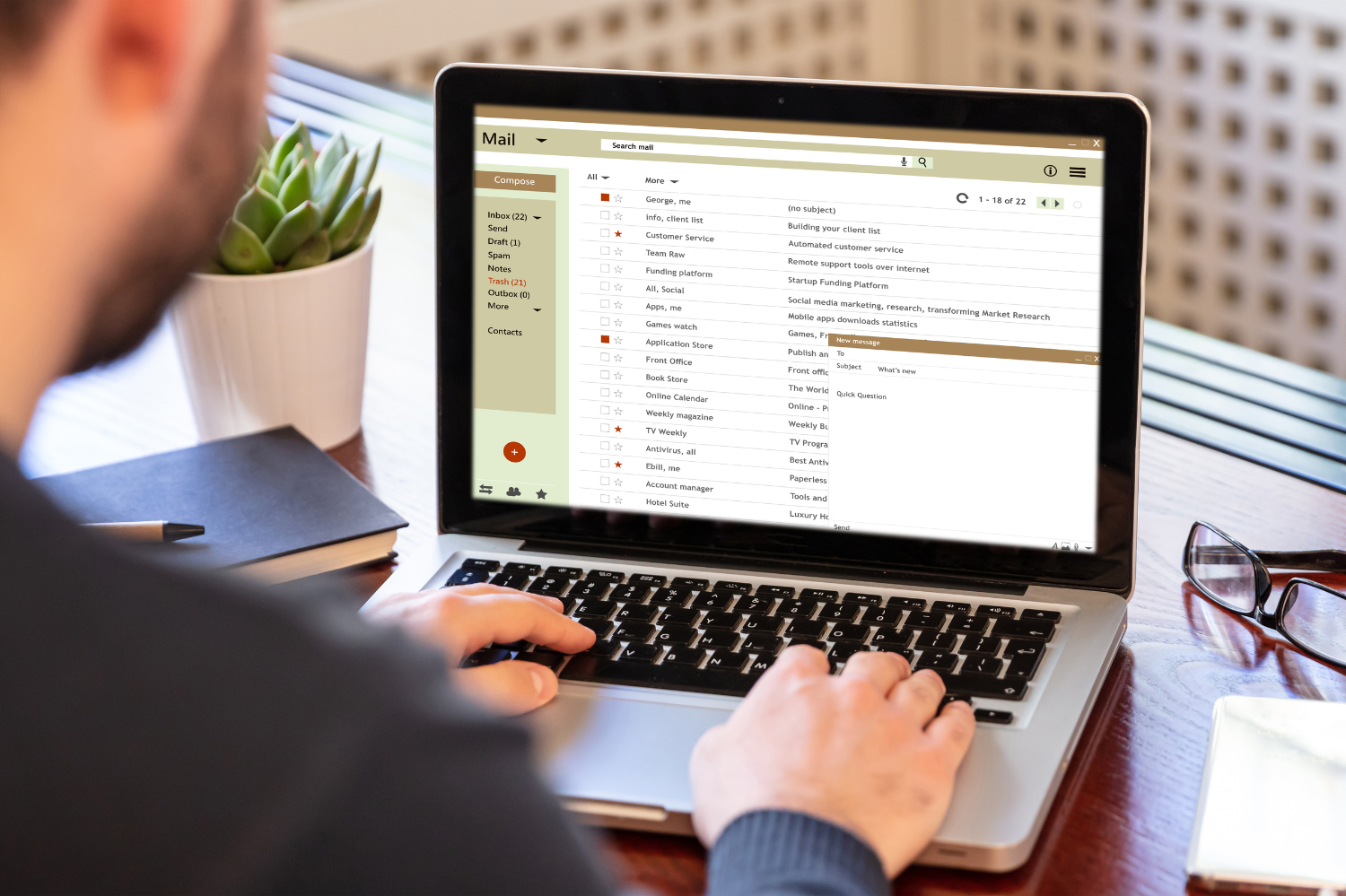For a successful email marketing strategy, it’s not the quantity of subscribers you should aim for but the quality.
Sure, a huge email list is impressive, but if its engagement is low, you’ll spend more on your campaign than you need to or, worse, damage your reputation. Before you know it, you’ll see a decrease in your overall deliverability.
This is why email list cleaning is so important.
In this guide, prepare to embark on a journey of email enlightenment. By the time we’re done, you’ll be equipped with the knowledge and tools needed to clean your email list and keep your bounce rates at bay.
7 Steps To Cleaning Your Email List

1. Assess Email List Health
To clean your email list and reduce bounce rates, start by assessing its health through key metrics such as bounce rate, engagement levels (open and click-through rates), spam complaints, and the age of the subscriptions. Analyzing these factors will help identify inactive or problematic subscribers who should be removed from the list.
2. Determine Reasons for Bounces and Low Engagement
Determining why your recipients lost interest will help you identify the parts of your email marketing campaigns that aren’t working and ensure this doesn’t happen with other subscribers.
A nonexistent email address, an undeliverable email, and a full mailbox are common reasons for email bounces, while poor messaging, lack of segmentation, and lack of relevant content are some common reasons for low engagement.
3. Identify Problematic Subscribers
Cleaning your list requires identifying all potentially harmful and spammy email addresses.
Some types of email addresses subjected to removal include:
- Those with incorrect domain names, syntax structure, or incorrect format.
- Bounced email addresses
- Spam email addresses
- Catch-all email addresses or those that accept any email sent to them, whether valid or not.
- Email addresses without a legitimate mailbox.
While this can be done manually, if you need a helping hand to make the process of email list cleaning easier, you can use a dedicated email list cleaning tool. Email validation services provide tools to help keep your list clean and help you avoid spam traps. They also improve your deliverability.
InboxAlly is a tool that allows users to repair and increase deliverability on any domain or IP on any platform. See its detailed feature list here.

4. Segment Inactive or Unresponsive Subscribers
Ensure that you are sending emails to only active subscribers. If you have inactive or unresponsive subscribers on your list, it’s time to segment them.
Implement marketing automation tools to streamline this process. These tools can automatically detect inactive subscribers based on engagement metrics like opens, clicks, and interaction frequency. Then, it’s time to move on to the next step.
5. Remove or Re-engage Inactive Subscribers
Once segmented, you can try to re-engage those who haven’t interacted with your emails recently.
For re-engagement emails, consider using a personalized approach, such as highlighting products they viewed or offering exclusive discounts, to draw their interest back. If subscribers do not respond to these re-engagement efforts, give them a simple option to opt out of the communication.
If this step fails, it’s best to delete these contacts permanently. Removing unresponsive subscribers helps maintain a clean, engaged email list, ensuring better deliverability and compliance with email marketing best practices.
6. Remove or Merge Duplicate Email Addresses
Duplicates can occur when subscribers unintentionally sign up multiple times, perhaps forgetting their previous subscription or re-entering their details during another visit. These duplicate entries not only skew your analytics but also increase the risk of spam complaints and reduce overall engagement rates.
To address this issue, you must periodically scan your list for duplicate entries and merge them into a single contact or remove them altogether. This ensures that each subscriber receives only one copy of your email, enhancing the user experience and increasing the likelihood of your emails reaching the subscribers’ inboxes.
7. Set Up a Consistent Email List Cleaning Schedule
Cleaning your growing email list is an ongoing process that requires effort and time. You must do frequent checks to ensure it is free of bad email addresses.
How frequently you do it depends on your email list growth rate, although cleaning your list every six months is ideal.
Best Practices for Minimizing Bounce Rates
Email marketing best practices play a significant role in inbox placement and avoiding the spam folder. Here are some proven tips to minimize bounce rates and maintain the health of your email marketing campaigns:

Implement Double Opt-in Procedures
This extra step helps you acquire more qualified contacts since new subscribers must click “confirm” in their confirmation email. Thus, it prevents issues linked to signup form typos or users submitting emails that don’t belong to them. Sending confirmation emails ensures that users enter valid email addresses.
Use a Consistent Sending Schedule
The frequency and timing of emails matters.
By establishing a regular emailing routine, you ensure your messages coincide with the optimal times for recipients to engage. This consistent approach not only boosts your open and read rates but also minimizes bounce rates by aligning with the recipients’ daily habits and availability.
A predictable email schedule builds trust and reliability with your audience as they come to expect and look forward to your messages at specific times.
Personalize Email Content
Personalizing your emails increases your chances of bypassing spam filters, getting them opened, and improving your click-through rates.
So, our next tip is for you to use dynamic content and address recipients by name to deliver customized messages based on their past interactions or preferences.
Including personalization likewise requires you to know about your customers’ and prospects’ download history, website activity, and satisfaction score.
Use the Unsubscribe Button to Your Advantage
Take a proactive approach to your unsubscribe email strategy. By proactive approach, we mean including a short survey on your unsubscribe page to determine what content they would rather receive or why they are unsubscribing.
Your goal should be to avoid customer frustration so they won’t regret giving you their email address. Allowing your disengaged subscribers a way out will help keep your list clean.
Related: How to Improve and Maintain Your Email Deliverability

Maximize Your Email Marketing Success Today
What are you waiting for? Let the email list purge begin.
Remember: you don’t want to harm your email sender reputation by having a large list of people who don’t open your email.
It requires effort to ensure your email campaigns drive the action you intend them to. But the process can be made easier using InboxAlly.
It’s the ultimate deliverability tool that supports you beyond regularly validating and cleaning your email list. It teaches email service providers (ESPs) to put your messages in the Inbox right from the start. Book a Live Demo.
Frequently Asked Questions
Why Clean Your Email List?
Cleaning your email list, also called email scrubbing, helps maintain your sender reputation and email deliverability.
Maintaining the health of your email list likewise decreases your campaigns’ bounce rate, lowers your sending cost, and leads to higher ROI since you target a smaller group of high-quality engaged subscribers.
How Would You Know That Yours Is a Bad Email List?
Well, having a very old email list is a sign that you have a bad list, or at the very least, one that requires cleaning. Many subscribers change their email addresses over time.
Another sign is having an email list with a fast growth rate. A good list is usually built gradually. And, of course, having a list that contains plenty of role-based or incorrect email addresses is a sign that you need to do some cleaning.
Related: My Emails are Bouncing – What to Do About It?!
What Is a Good Email Bounce Rate?
A good hard bounce rate of below 2% is considered healthy. When it exceeds 2%, it suggests potential issues with the list acquisition process or its quality.
To calculate your email bounce rate, divide the number of bounced emails by the total number of emails sent. Then, multiply the number by 100.
What’s The Difference Between a Soft and Hard Bounce?
A soft bounce refers to an email that reaches the recipient’s mail servers but bounces back before reaching the inbox. This is usually a temporary problem caused by a technical issue (e.g., an internet outage) or the recipient’s mailbox is full.
On the other hand, hard bounces refer to emails permanently rejected by the recipient’s mail server. It typically happens because of an unexpected error that makes delivery impossible or because of an invalid email address.
Some common reasons emails bounce include a full mailbox, content-related soft bounces, a domain or email address that doesn’t exist, and email authentication issues.